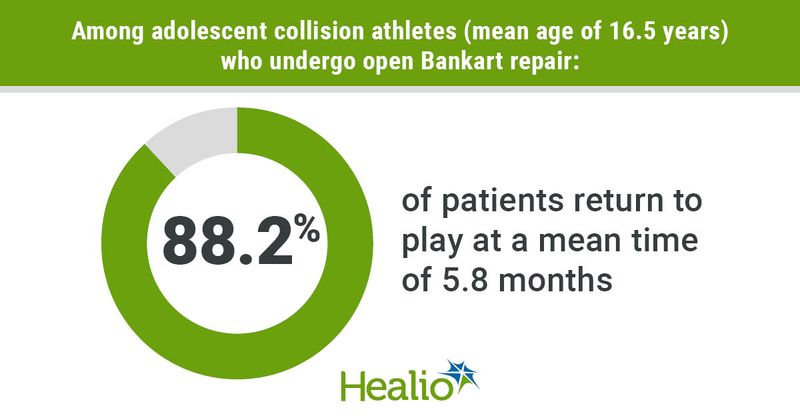Open Bankart repair yields high return to play rates among adolescent collision athletes
Click Here to Manage Email Alerts
Published results showed collision athletes aged 18 years and younger who underwent open Bankart repair for anterior shoulder instability had high return to play rates, high satisfaction and excellent functional outcomes.
Ian P.M. Hickey, BSc, and colleagues at the Sports Surgery Clinic in Dublin, Ireland, retrospectively reviewed data on 34 male collision athletes (mean age, 16.5 years) who underwent open Bankart repair (OBR) for anterior shoulder instability between 2010 and 2019. Collision sports were defined as rugby and Gaelic athletic games, according to the study.

Researchers also noted OBRs were performed using a subscapularis split in all patients. Outcome measures were collected at a mean follow-up of 49.5 months and included recurrent instability, return to play rate and time to return to play, as well as the Shoulder Instability Return to Sport after Injury score (SIRSI), Subjective Shoulder Value (SSV) and VAS pain score.
Overall, 30 patients (88.2%) returned to play at a mean time of 5.8 months, with 27 patients returning to their preinjury level of participation. At final follow-up, mean SIRSI score was 86.3, mean SSV score was 86.8 and mean VAS score was 1.6. Two patients reported subluxation events that did not require reduction, and four patients required further surgery for a redislocation.
“Reduced recurrence rates are likely to result in higher rates of return to play, which may suggest that surgical intervention may be the treatment of choice in treating anterior dislocation in the young athlete, in particular the collision athlete,” the researchers wrote in the study.
